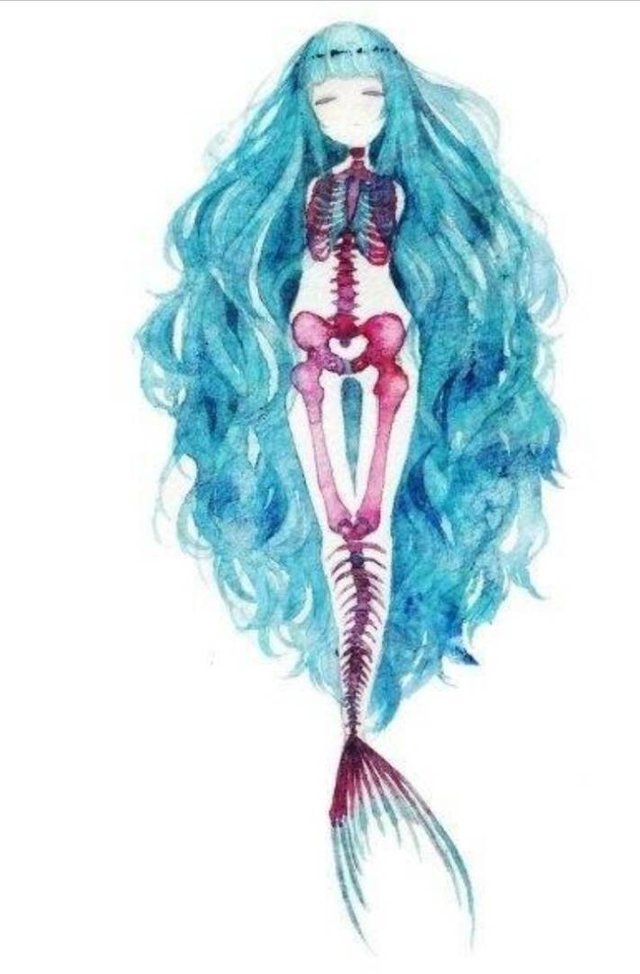How mermaids reproduce..
How do mermaids “do it”? The question of mermaid reproduction has been one of the great enduring mysteries about these beautiful but arguably mythical beings. The answer really has a lot to do with the exact nature of mermaids. The answer to this requires knowing one other questions:

Are mermaids really half fish?
When asked to depict mermaids, most people will draw a woman (either topless or wearing seashells or similar types of bras) down to the waist, and then start green fish scales from there down. These scales go all the way to the base of the tail, at which point there’s usually a “caudal” or tail fin that’s about a meter wide and between a half and full meter in length. When the mermaid sits down, the caudal fin typically runs along the frontal, or coronal, plane; it is flat, along the same plane as the back.

This is not typical of any fish on the planet. On all fish, from sharks to rays to bony fish, the caudal fin is always vertical (sagittal). In addition to this, there are remarkably few fish that are green (the Green Fish below is one of the few):
( )
)
Such fish also tend to have very subtle scale patterns and most have bodies that are flat along one dimension, and with a clear lens shape.
Finally, mermaids have two significant features that most fish don’t have;

Long flowing hair and (often significant) mammary glands - or in the words of the octopus legged Ursula from Disney’s the Little Mermaid, BODY LANGUAGE:
What this strong suggests is that mermaids are a case of divergent evolution - while they have what look like fish tails, these tails are in fact due to an altogether different evolutionary process. One natural consequence of this is to ask whether in fact mermaids have different ways of reproducing that most fish don’t.

The most obvious assumption to make is that mermaids and humans are related to one another. There’s a fair amount of evidence in folklore and legend that mermaids may have come from humans. One tale told of St. Patrick was that, while he was busy driving the snakes from Ireland, he came across a gathering of witches, and transformed them into mermaids. An older tale from the same area talks about St. Liobhan, an Irish priestess who presided over a magical well. When the well overflowed, the valley was flooded, but the spirit of the well turned her priestess into a mermaid and her dog into an otter.
Similar stories are told throughout most of northern Europe, including the oldest known mermaid sighting, the Assyrian goddess Atargatis who made the mistake of attempting to drown herself in an enchanted pool, but was instead transformed into a mermaid who became the love goddess of the region, so probably had a pretty good idea about the whole “doing it” issue

The wide hips that you see on most mermaids also points at certain anatomical features. If mermaids were completely fish, then they would not have a pelvic girdle. This also suggests that the tail of a mermaid starts not at the base of the pelvis, but rather where the legs meet the knees, something along the lines of this:

What this hints is that mermaids usually have very much the same kind of anatomy that human women do, albeit hidden beneath convenient scales or shadows.
Beyond that, not much can be said (at least on Quora). Best solution of course is to get comfortable with a mermaid and (very politely) ask her about it. Assuming you don’t get a fin across the face, it could be an education.
Copied from Xclub
Written by Habeeb.
Congratulations @lyf-of-a-teen! You received a personal award!
Click here to view your Board
Do not miss the last post from @steemitboard:
Congratulations @lyf-of-a-teen! You received a personal award!
You can view your badges on your Steem Board and compare to others on the Steem Ranking
Vote for @Steemitboard as a witness to get one more award and increased upvotes!